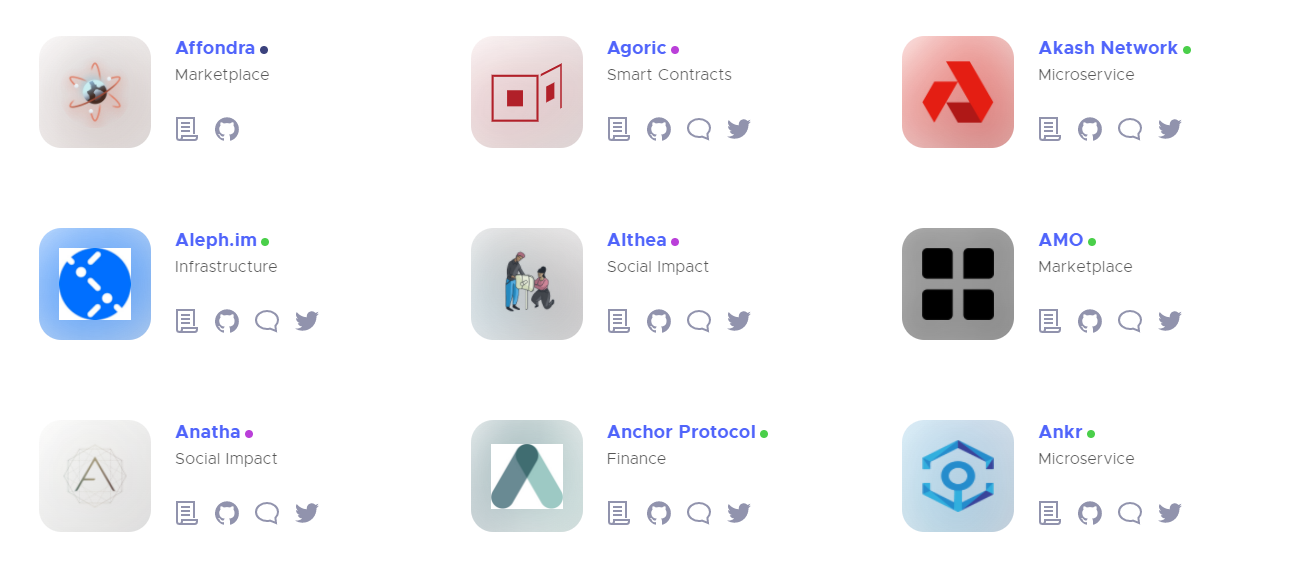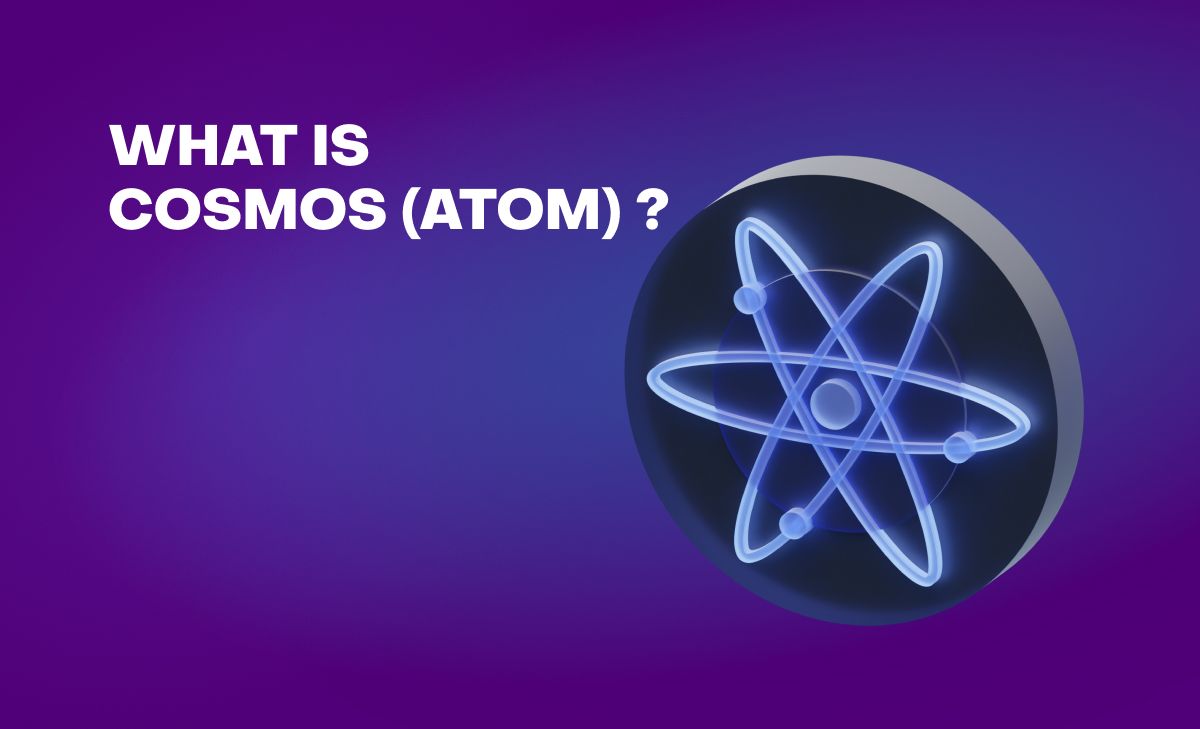Next-generation blockchains have emerged since the growth of Ethereum in 2017. Many have sought to address the biggest obstacles to adoption like scalability and interoperability. Cosmos (ATOM), a blockchain of blockchains, is one such project that has gained traction in these years.
The Cosmos network seeks to connect various disparate blockchain networks with its ecosystem. With such a network, individual networks can open the possibilities of decentralized systems by freely allowing assets to move between chains, making the flow of information, data, and value more fluid than ever.
What Is Cosmos (ATOM)?
Cosmos is a project strictly focused on solving the interoperability problem between blockchains. The team calls it the internet of blockchains, which is about as apt a way to describe its utility as any. With its design, Cosmos hopes to bring both interoperability and scalability solutions to the blockchain space.
The project was announced in 2016 and held its ICO in 2017, raising a modest $17 million. In hindsight, it seems the project was tremendously undervalued. The team put the funds towards the development of some of the fundamental building blocks of Cosmos.
The Cosmos network launched its mainnet in 2019 and has seen some growing popularity within the crypto space since then. Projects that have launched in the Cosmos and its Tendermint ecosystem include Cronos, Injective, Kava, among many others.
How Does Cosmos (ATOM) Work?
At a high-level, Cosmos functions as a hub where different networks can exist independently, with the hub facilitating interactions between them. The Tendermint protocol lays out the rules for the interaction, and is a PoS blockchain, making it more efficient and environmentally friendly than some alternatives. With it, multiple assets are compatible with each other within the Cosmos ecosystem, thanks to the inter-blockchain communication (IBC) protocol.
In short, Cosmos is a network of blockchains that operate parallelly and independently, using their own consensus mechanisms, like the Tendermint consensus mechanism.
What Is Cosmos Hub?
The Cosmos Hub is at the heart of the whole interoperable system, so it is worth going over it in more detail.
The hub plays an intermediary role, almost like a translator for the different languages that the member blockchains 'speak’. It keeps a record of the current state of every Cosmos Zone that is connected to the hub, with these Zones representing individual blockchain ecosystems. As such, it is a router for each of Cosmos’ Zones.
What Are Cosmos Zones?
Cosmos’ Zones are application-specific blockchains. Cosmos is designed as such that these Zones can choose to accept or refuse connections with any others that are connected to the hub.
By facilitating the creation of PoS blockchains, instead of the more cumbersome PoW blockchains, the Cosmos SDK helps teams build Zones efficiently and quickly.

Features of Cosmos (ATOM)
There are a few features that are particularly important to the utility of Cosmos. The most significant ones are listed below.
Cosmos SDK
The Cosmos SDK is a modular development framework that lets developers create application-specific blockchains or Zones. The Cosmos team says that developers can build their own Zones very quickly, which is essential to the adoption of the network.
Governance
Governance sees Cosmos validators and delegators vote on proposals such as changing network parameters or other typical decisions made in a governance forum. There are a few different periods that go into the whole process.
First, during the deposit period, users deposit their ATOMs into a proposal, which goes on for two weeks. Then, the voting period begins, and contributors can cast votes. Delegators can also offer their ATOMs for voting influence to validators.
Lastly, the tally period takes place. A minimum of 40% of the total staked tokens after the voting period must vote.

How To Stake Cosmos
Staking ATOM also helps secure the Cosmos network. There are the usual benefits to this, such as contributing to the network’s success and potentially seeing a rise in the Cosmos (ATOM) price. The staking APY varies but is typically 9.7% of the staked ATOM.
To stake ATOM, you will need some first. You can buy it from Binance, Coinbase, or Kraken and move it to a non-custodial wallet that supports Cosmos staking. Many Cosmos stakers use Keplr wallet.
Next, you will have to choose a validator. For most wallets, you can choose a validator from a list of validators. For other wallets, a validator is pre-selected for the wallet user.
After choosing a validator, you select “delegate” and enter the amount. Confirm the transaction to start staking!
How To Buy Cosmos
As it is widely known in cryptocurrency trading, the Cosmos crypto ATOM is available on several exchanges, including Binance, Coinbase, Kraken, and Komodo Wallet. With a little bit of knowledge, knowing where to buy the Cosmos crypto shouldn’t be a problem.
To buy the Cosmos token, you won’t need much more than an account on one of these exchanges and some capital. On top of that, you can store ATOM on a variety of different wallets for safekeeping.
Future of Cosmos (ATOM)
The future of Cosmos (ATOM) is hard to define accurately, given that there is so much competition in this space. Recent Cosmos (ATOM) news doesn’t grab as many headlines like some other projects, but it’s clear that the market is in need of strong interoperability solutions.
Cosmos has already demonstrated the efficacy of its features and design, so what matters now is healthy adoption and facilitation of interaction between different networks. Only time will tell if Cosmos (ATOM) can do well in the years to come, as the near future will see interoperability requirements increase.
Cosmos Is Tackling a Significant Blockchain Obstacle
With this knowledge of what Cosmos (ATOM) is, you will be better prepared to evaluate and do further research about the network. The solution being worked on is a necessary one, but by no means is it the only approach to solve interoperability.
We recommend learning more about the state of blockchain interoperability and what teams are doing to overcome this obstacle. This is a significant pain point in the industry and is set to revolutionize the industry once it is fully tackled.
ATOM Available on Komodo Wallet
Komodo Wallet is a non-custodial wallet, crypto bridge, and peer-to-peer (P2P) decentralized exchange that provides native support for the Cosmos blockchain and the ATOM coin.
Users can HODL and trade ATOM on Komodo Wallet along with other popular cryptocurrencies such as BTC, ETH, DOGE, MATIC, and much more.
